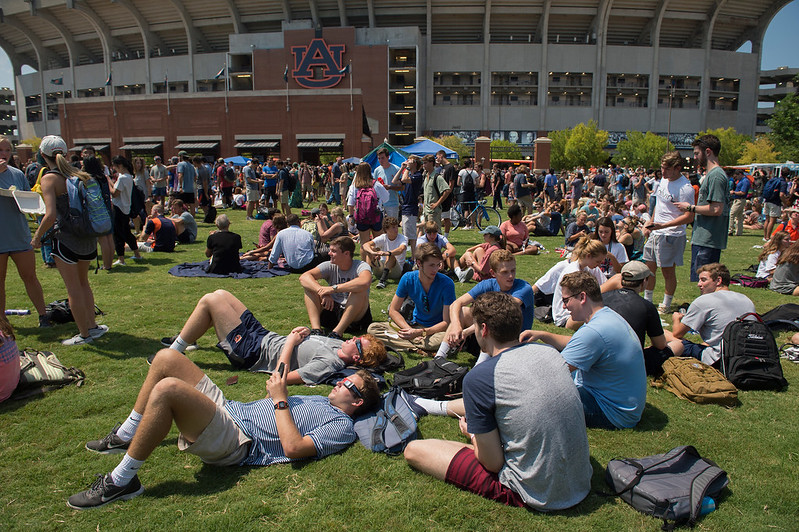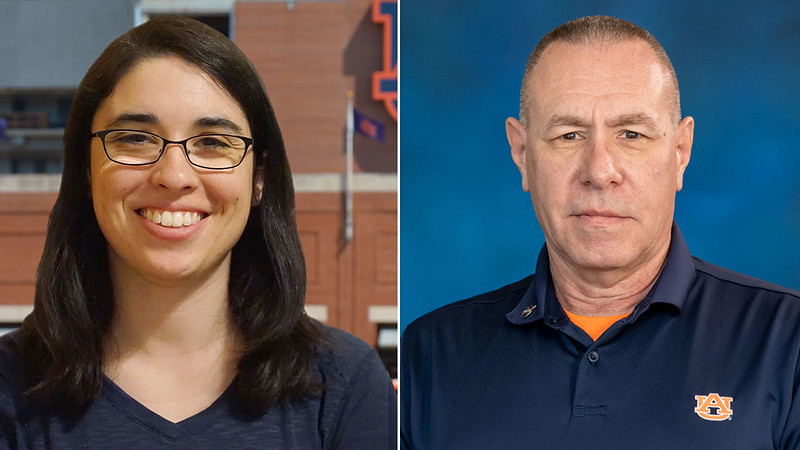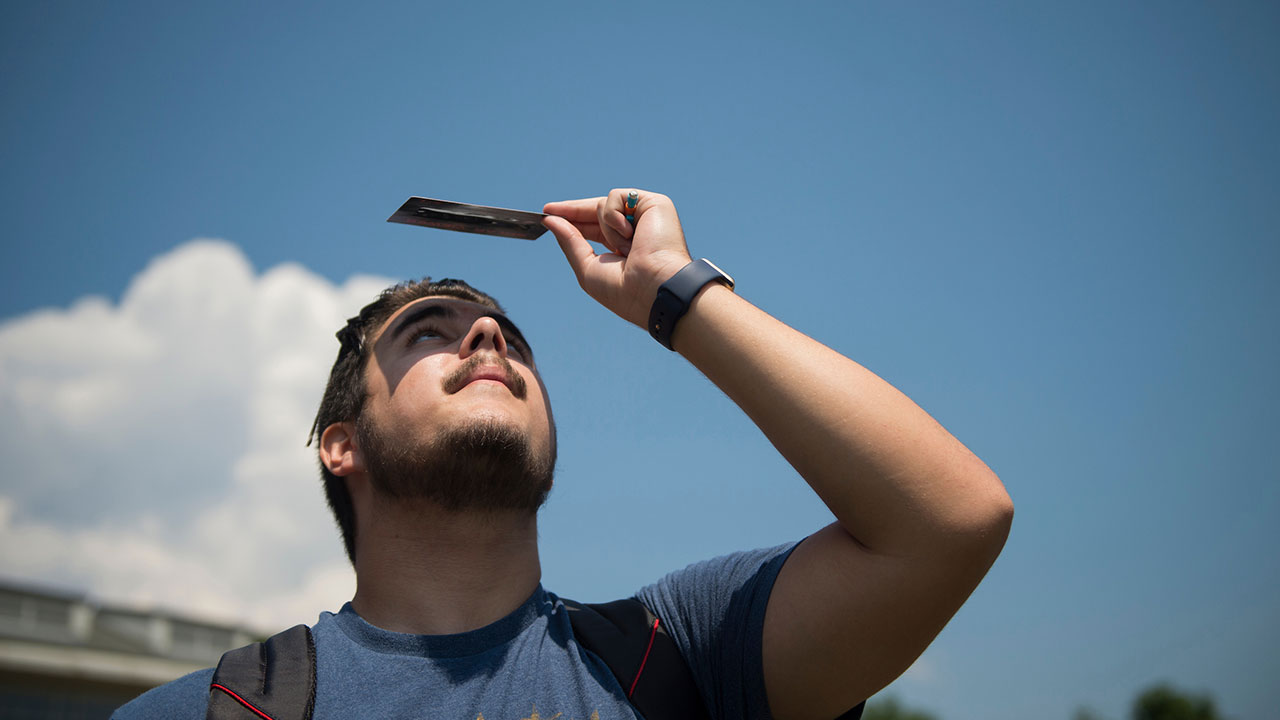content body

Students on Auburn's campus enjoyed viewing the last Great American Solar Eclipse in 2017.
The last of its kind until 2044, this year’s Great American Total Solar Eclipse is a viewing opportunity of a lifetime.
Those fortunate enough to be within the path of totality during the 2017 eclipse know just how fascinating it is to witness an event where the moon passes in front of the sun, casting the surrounding area in darkness for a few minutes. The eclipse will take place in Auburn on April 8 from noon to 4 p.m. CT, and while the university will not be in the direct path of totality, an 83.3% solar disk coverage partial eclipse will be viewable.
With the peak of partiality starting at 2 p.m., the Auburn University Department of Physics will host three viewing locations across campus for students, employees and community members.
“From a personal perspective, I have been chasing eclipses in one form or another since I was 18. I've only seen one, either lunar or solar eclipse, unobscured, in 45 years of trying,” said Mark Adrian, an associate professor and researcher within the department and one of the event organizers. “We're planning to have telescopes or other means of projecting the eclipse set up at all three sites so people can see it safely. We've also had some special solar eclipse glasses made, and we have 3,000 of those we will distribute.”
The department will establish telescope viewing stations by Samford Hall, Cater Hall and the campus green next to the Melton Student Center. In addition, these locations will be well-stocked with glasses that make it safe to view the eclipse without causing damage to the viewer’s eyes, and visitors will be able to view live video streams from cities in the path of totality.

Melissa Halford and Mark Adrian from Auburn's Department of Physics are organizing a trio of eclipse viewing locations on campus on April 8.
“There’s nothing about an eclipse that makes it especially dangerous or anything like that, other than that people are deciding to look at the sun,” said Melissa Halford, another organizer and physics lecturer. “You always need to be wearing eclipse glasses or looking through a filter specifically designed to look at the sun, not just sunglasses, because it needs to block a very large fraction of the light to be safe.”
Not only is the event exciting to witness, it also offers several educational opportunities. For example, a group of faculty members and students will be heading to eastern Tennessee to witness the eclipse’s full totality and observe the multiple applications this event has across a wide variety of scientific fields.
“Whether it's astronomy, chemistry or biology, all of these fields play a role when an eclipse occurs,” Adrian said. “Night birds come out, night insects come out. The environment changes, and it has a lot of implications across many fields of science.”
With a path of totality 70 miles wide across the United States, this total solar eclipse will be unlike any other. The chance to see even a partial view can spark curiosity in anyone.
“It's a really great way to just get people interested or involved in science in general, not necessarily astronomy, but it's a nice tool to show how cool science is,” Halford said.

Auburn's Department of Physics will distribute solar eclipse glasses on April 8 from noon-4 p.m. CT during the eclipse, with the peak of partiality taking place at 2 p.m. Students can obtain these glasses at three locations across campus: outside Samford Hall, Cater Hall and the campus green next to the Melton Student Center.
LOOK UP!
Don’t miss this once-in-a-lifetime viewing of the Great American Eclipse. For more information about the Auburn Department of Physics’ upcoming viewing, visit its specially dedicated website.
See for yourself




